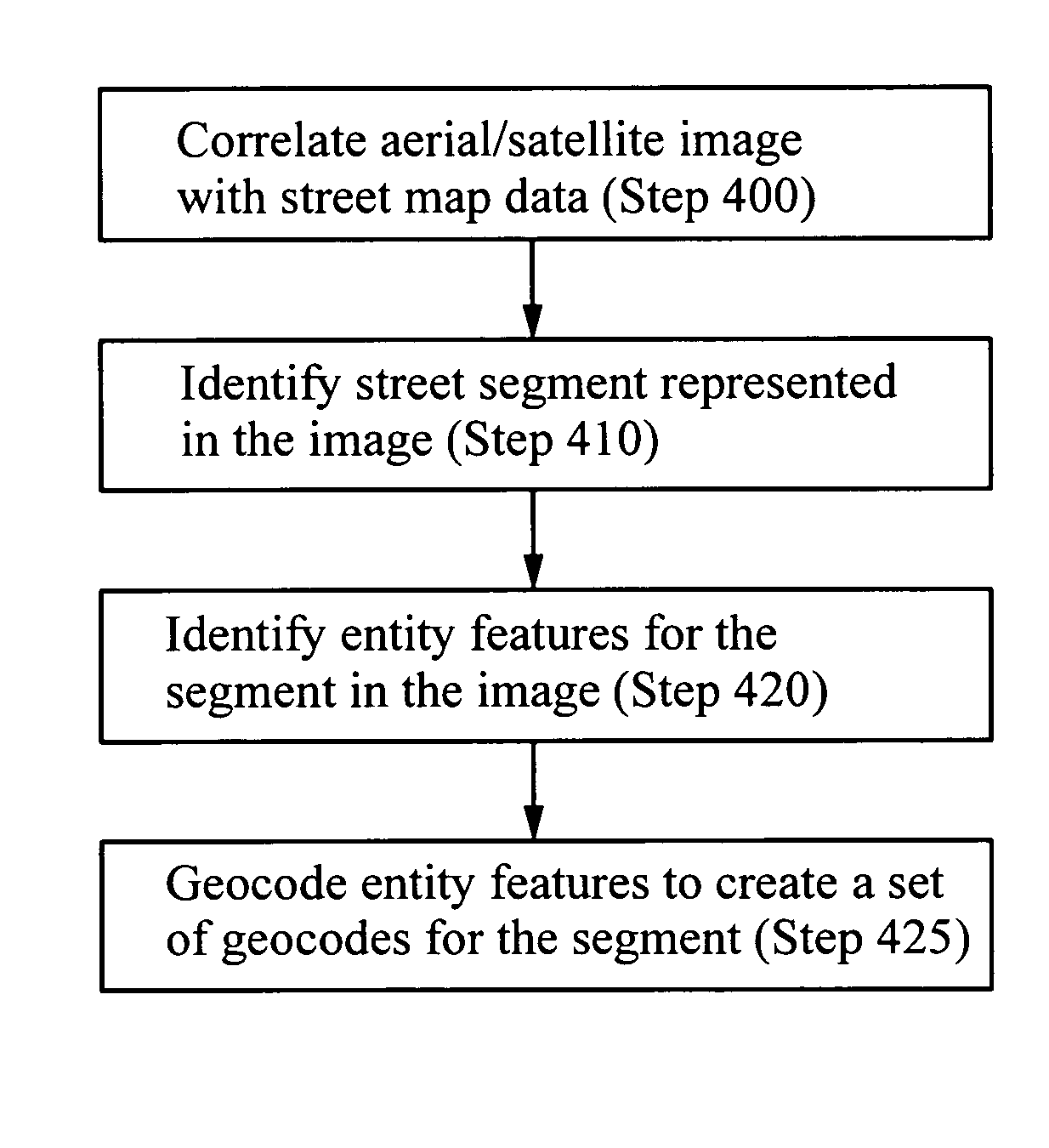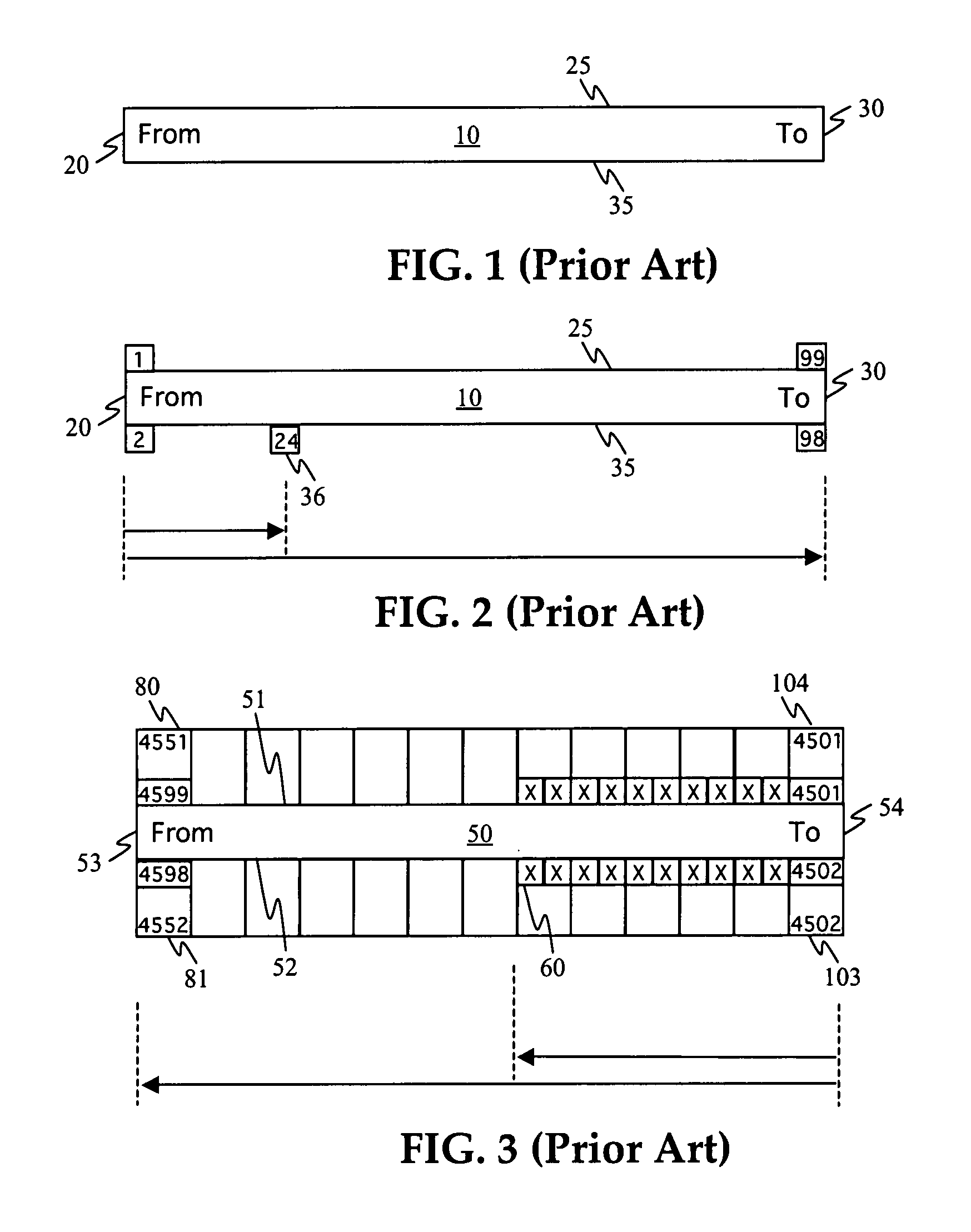Methods for assigning geocodes to street addressable entities
- Summary
- Abstract
- Description
- Claims
- Application Information
AI Technical Summary
Benefits of technology
Problems solved by technology
Method used
Image
Examples
Embodiment Construction
[0041]The following definitions provide a clear and definite interpretation of various terms used in the context of the present description.
[0042]Geocoding—Globally Unique and Locally Unique, Implicit and Explicit
[0043]A geocode is a code that specifies a single geographical position of some entity. Geocoding is the process that assigns a geographical position, such as a pair of latitude-longitude coordinates, to some entity or, equivalently, to a unique identifier of such an entity (e.g., a street address, intersection, region name, or landmark name). Entities are buildings, structures, lots, properties, or other geographical regions. In some cases, large regions may be geocoded. For example, a zip code region, uniquely identified by its zip+4 code, may be geocoded based on the geographic position of the centroid of the zip code region. Similarly, when a house is geocoded, a single position somewhere in or near the house is selected and associated with a unique identifier, such as ...
PUM
 Login to View More
Login to View More Abstract
Description
Claims
Application Information
 Login to View More
Login to View More - R&D
- Intellectual Property
- Life Sciences
- Materials
- Tech Scout
- Unparalleled Data Quality
- Higher Quality Content
- 60% Fewer Hallucinations
Browse by: Latest US Patents, China's latest patents, Technical Efficacy Thesaurus, Application Domain, Technology Topic, Popular Technical Reports.
© 2025 PatSnap. All rights reserved.Legal|Privacy policy|Modern Slavery Act Transparency Statement|Sitemap|About US| Contact US: help@patsnap.com



